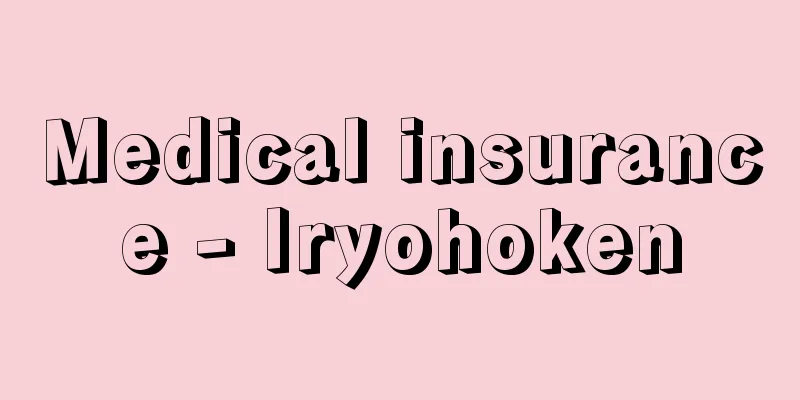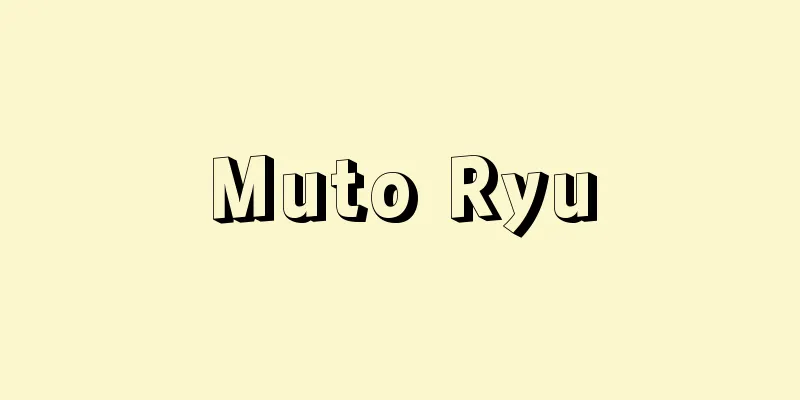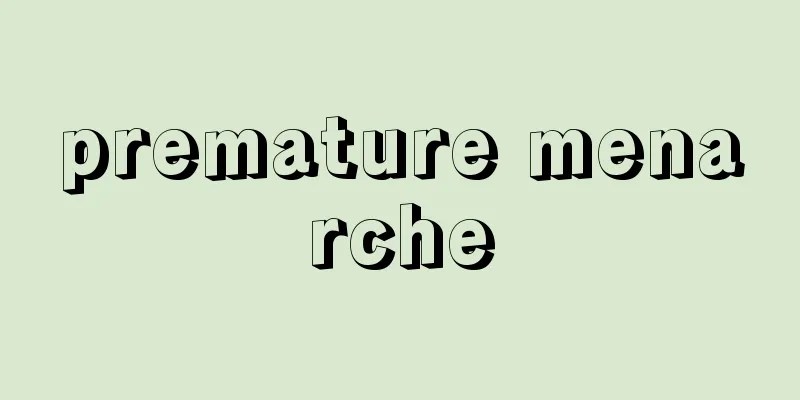Medical insurance - Iryohoken

|
Generally speaking, this refers to social insurance that provides medical benefits and unemployment benefits to compensate for the economic losses of households due to the following insurance accidents: injury, illness, and childbirth. To supplement this public medical insurance, private medical insurance from life insurance companies and medical expense insurance from non-life insurance companies have become popular to a certain extent, but the following provides an overview of medical insurance as social insurance. [Yasuhiko Yamazaki November 13, 2020] History and Recent ReformsThe world's first medical insurance was introduced in Germany with the Sickness Insurance Act of 1883. Other European countries followed suit, with the UK enacting the National Health Insurance Act in 1911. In Japan, the Health Insurance Act (Kenpoho) was enacted in 1922 (Taisho 11) for factory workers and the National Health Insurance Act (Kokuhoho) was enacted in 1938 (Showa 13) for farmers and other self-employed individuals, with the system of voluntary establishment, voluntary membership, and association. The new National Health Insurance Act of 1958 (Showa 33) made it mandatory for all cities, towns, and villages to implement National Health Insurance, and universal health insurance was realized in April 1961. During the period of high economic growth, both Health Insurance (Kenpo) and National Health Insurance improved benefits, such as reducing the self-payment, and in 1973, the Elderly Welfare Act was amended to make medical care free for the elderly. However, since the 1980s, the system entered a period of review in response to a society with an aging population and a declining birthrate. After the enactment and review of the Health Care Act for the Elderly and the Retiree Medical System, a new elderly medical system was established in 2008 (Heisei 20), and in 2018 the financial management of NHI was transferred to the prefecture level, with it being jointly managed by prefectures and municipalities. [Yasuhiko Yamazaki November 13, 2020] System typeInternationally, health insurance systems are divided into social insurance systems (Germany, France, the United States, etc.) and tax-funded health service systems (England, Italy, Sweden, etc.). In France, which has a social insurance system, the system is divided by occupation, but 99% of the population is enrolled in health insurance, and health insurance is practically applied to the entire population. In Germany, high-income earners, self-employed people, and civil servants, who are not compulsory, are also required to enroll in private health insurance, and virtually universal health insurance has been realized. In the United States, the public system is limited to Medicare, which is a medical insurance for the elderly over 65 years old and the disabled, and Medicaid, which is medical assistance for low-income earners, and medical insurance for the working generation is mainly provided by private health insurance. Under the Obama administration, the Affordable Care Act, commonly known as Obamacare, was enacted in 2010, and from 2014, it became mandatory to enroll in some form of health insurance, including private insurance, and companies were generally required to provide health insurance, but there are still many uninsured people who are not covered by any health insurance. [Yasuhiko Yamazaki November 13, 2020] Types of medical insurance in JapanJapan's medical insurance is divided into employee insurance, which is for employees employed in the workplace, and national health insurance, which is for general residents such as self-employed people. In addition, there is the medical system for the elderly, which is for people aged 75 or older, and those aged 65 to 75 who have a certain degree of disability. All citizens are required to join these systems, making it a universal health insurance system. Employee insurance is divided into health insurance, seamen's insurance, national civil servants' mutual aid association, local civil servants' mutual aid association, and private school teachers' mutual aid association. Of these, health insurance is divided into health insurance managed by the National Health Insurance Association (association health insurance) and union-managed health insurance (union health insurance, health insurance union), and there are 1,391 unions, mainly consisting of large companies (as of the end of March 2019). National health insurance is divided into national health insurance of prefectures and municipalities (including special wards) and national health insurance unions (national health insurance unions). There are 162 National Health Insurance Associations across Japan, consisting of people engaged in the same type of business or work (as of the end of March 2019). The insurer for the Medical Care System for the Elderly is a regional association to which all municipalities in each prefecture belong. The self-payment ratio for statutory medical benefits is unified, and by age, it is 30% for those who have completed compulsory education and are under 70 years old, 20% for those who have not yet completed compulsory education, 20% for those who are 70 to 75 years old (30% for those with income equivalent to that of an active worker), and 10% for those 75 years old or older (30% for those with income equivalent to that of an active worker). In addition, each system has a high-cost medical care payment system that refunds the excess amount when the self-payment amount exceeds a certain amount, and a high-cost nursing care combined medical care payment system that refunds the excess amount when the total self-payment amount for medical insurance and nursing care insurance exceeds a certain amount. The difference between the systems is cash benefits, and the biggest difference with employee insurance is that in the municipal national health insurance and the medical care system for the elderly, injury and sickness allowance and maternity allowance during leave are optional benefits of the insurer, and no insurer implemented them until 2019 (Reiwa 1). However, since 2020, many insurers have implemented them as an exception for employees infected with the new coronavirus disease (COVID-19) with financial support from the government. Benefit funds are covered by insurance premiums and tax revenue sources such as national treasury contributions. Insurance premiums for employee insurance are based on a salary-proportional system, while National Health Insurance combines ability-based and benefit-based contributions. National treasury contributions are allocated according to the financial strength of the system, and for union health insurance and mutual aid societies that can operate financially independently with insurance premiums alone, no national treasury contributions are made except for some union health insurance societies that are in financial difficulty, but for association health insurance, the national treasury bears 16.4% of benefit costs, etc., and for National Health Insurance, 50% of benefit costs, etc., plus public funds (national and local) contributions for insurance premium reductions, etc. The funding for the Long-Term Care Insurance System for the Elderly comes from 10% insurance premiums from the elderly, approximately 50% public funds, and approximately 40% support grants for the elderly from each medical insurance system. [Yasuhiko Yamazaki November 13, 2020] "New Lecture Series on Social Security Law 1: Future Medical Care and Pensions," edited by the Japan Social Security Law Association (2012, Horitsu Bunkasha)" ▽ "What is the problem with medical care? Japan's medical model in a super-aged society, written by Matsuda Shinya (2013, Keiso Shobo)" ▽ "Japan's medical care: its structure and new developments, written by Iwabuchi Yutaka (2015, Chuohoki Publishing)" ▽ "Community-based comprehensive care and regional medical cooperation, written by Niki Tatchi (2015, Keiso Shobo)" ▽ "How should we formulate a regional medical plan, written by Matsuda Shinya (2015, Igaku Shoin)" ▽ "Toward the creation of a sustainable medical insurance system: the trajectory and key points of the 2015 reforms, edited by the Study Group to Consider the Future of the Medical Insurance System" (2016, Daiichi Hoki Publishing)" ▽ "Japan's medical care and nursing care: history, structure, and the direction of reform, written by Ikegami Naoki (2017, Nikkei Publishing Division)" ▽ "Interpretation and Implementation of the Health Insurance Act, 2017 Edition" (2017, Hoken) ▽ "Overview of the Health Insurance Act, August 2017 Edition" (2017, Social Insurance Research Institute) ▽ "Gonjo Zenichi, A Little Concern About Medical Care and Nursing, Expanded Edition (2018, Keiso Shobo)" ▽ "Yoshihara Kenji and Wada Masaru, History of the Japanese Health Insurance System, Third Edition (2020, Toyo Keizai Inc.)" ▽ "Shimazaki Kenji, Japan's Healthcare - Systems and Policies, Expanded and Revised Edition (2020, University of Tokyo Press)" ▽ "Matsuda Shinya, How to Utilize Data from Regional Medical Plans" (2020, Igaku Shoin)" ▽ Niki Tatchi, Medical Care and Social Security Reform in the Post-COVID Crisis Period (2020, Keiso Shobo)" ▽ "Health Insurance Association of Japan, ed., Medical Care in Charts and Diagrams, Annual Editions (Gyosei)" ▽ "Annual editions of 'Trends in Insurance and Pensions' published and edited by the Health, Labor and Welfare Statistics Association" ▽ "'Introduction to Healthcare Policy' by Mano Toshiki (Chuko Shinsho)" ▽ "'Interpreting Medical and Nursing Issues' by Ikegami Naoki (Nikkei Bunko)" ▽ "'Rethinking Healthcare Policy - The Future of Universal Healthcare' by Shimazaki Kenji (Chikuma Shinsho)" ▽ "'The Medical Crisis - Aging Society and Innovation' by Mano Toshiki (Chuko Shinsho)" [Reference items] | | | | | | | | | | |Source: Shogakukan Encyclopedia Nipponica About Encyclopedia Nipponica Information | Legend |
|
一般的には、傷病や分娩(ぶんべん)をおもな保険事故として、それに伴う治療費の支払いや収入の減少などによる家計の経済的損失を補填(ほてん)するため、医療給付や休業手当などの保険給付を行う社会保険をいう。この公的医療保険を補完するものとして、民間の生命保険会社の医療保険や損害保険会社による医療費用保険なども一定の普及をみせているが、以下では社会保険としての医療保険の概要を述べる。 [山崎泰彦 2020年11月13日] 沿革と近年の制度改革世界最初の医療保険は、ドイツにおいて1883年の疾病保険法によって導入された。その後ヨーロッパ各国がこれに続き、1911年にはイギリスで国民保険法が制定された。日本では、1922年(大正11)に工場労働者などを対象とする健康保険法(健保法)、1938年(昭和13)には、農民などの自営業者を対象として、任意設立・任意加入・組合方式の国民健康保険法(国保法)が制定された。また1958年(昭和33)の新しい国保法により全市町村に国保の実施が義務づけられたことにより、1961年4月に国民皆保険が実現した。高度経済成長期には、健康保険(健保)および国保ともに自己負担の軽減などの給付改善を行い、1973年には老人福祉法改正により老人医療費の無料化までも実施した。しかし、1980年代以降は少子高齢化社会に対応した制度の見直し期に入り、老人保健法や退職者医療制度の制定・見直し等を経て、2008年(平成20)に新たな高齢者医療制度が創設され、2018年には国保の財政運営が都道府県単位となり、都道府県と市町村が共同で運営することになった。 [山崎泰彦 2020年11月13日] 制度類型国際的にみると医療保障制度の体系は、社会保険方式(ドイツ、フランス、アメリカなど)と、租税負担による保健サービス方式(イギリス、イタリア、スウェーデンなど)に分かれる。社会保険方式の国についてみると、フランスでは、制度が職域ごとに分立しているが、99%の国民が医療保険に加入し事実上全国民に医療保険が適用されている。ドイツでも、強制適用でない高所得者、自営業者、公務員等についても民間医療保険への加入が義務づけられており、事実上の皆保険が実現している。アメリカでは、公的な制度は、65歳以上の高齢者と障害者などを対象とする医療保険であるメディケアと低所得者を対象にした医療扶助であるメディケイドに限られ、現役世代の医療保障は民間医療保険を中心に行われている。オバマ政権のもとで、2010年にオバマケアと通称されている医療保険制度改革法が成立し、2014年から原則として民間保険を含むいずれかの医療保険への加入が義務づけられ、企業に対しては医療保険の提供が原則義務化されたが、今なお、いかなる医療保険の適用も受けていない無保険者が少なくない。 [山崎泰彦 2020年11月13日] 日本の医療保険の種類日本の医療保険は、職域の雇用労働者を対象にした被用者保険と、自営業者などの地域の一般住民を対象にした国民健康保険に分かれ、さらに75歳以上の高齢者と65歳以上75歳未満の一定程度の障害の状態にある者を対象とする後期高齢者医療制度があり、全国民にこれらの制度への加入を義務づける国民皆保険体制となっている。被用者保険は、健康保険、船員保険、国家公務員共済組合、地方公務員共済組合、私立学校教職員共済に分かれている。このうち、健康保険は、全国健康保険協会管掌健康保険(協会健保)と組合管掌健康保険(組合健保、健康保険組合)に分かれ、組合健保については大企業をおもな母体として1391の組合がある(2019年3月末時点)。国民健康保険は、都道府県および市町村(特別区を含む)の国民健康保険と国民健康保険組合(国保組合)に分かれる。国保組合には同種の事業・業務の従事者で構成される全国で162の組合がある(2019年3月末時点)。後期高齢者医療制度は、各都道府県ごとに全市町村が加入する広域連合が保険者である。 法定の医療給付の自己負担割合は統一され、年齢別に、義務教育就学後70歳未満3割、義務教育就学前2割、70歳以上75歳未満2割(現役並み所得者3割)、75歳以上1割(現役並み所得者3割)とされている。さらに、自己負担額が一定額を超えた場合に超過額を払い戻す高額療養費支給制度、および医療保険と介護保険の自己負担の合計額が一定額を超えた場合に超過額を払い戻す高額介護合算療養費制度が各制度共通に設けられている。制度間で差異があるのは現金給付で、被用者保険とのとくに大きな違いは、市町村国保と後期高齢者医療制度では休業時の傷病手当金や出産手当金は保険者の任意給付とされ、2019年(令和1)までは実施する保険者はいなかったが、新型コロナウイルス感染症(COVID(コビッド)-19)に感染した被用者について、2020年から多くの保険者が国の財政支援により特例的に実施している。 給付財源は保険料と国庫負担などの租税財源によってまかなわれる。保険料は、被用者保険では報酬比例制であるが、国保では応能負担と応益負担を組み合わせている。国庫負担は制度の財政力に応じて配分されており、保険料のみで財政的に自立した運営が可能な組合健保と共済組合には、組合健保の一部の財政窮迫組合を除いて国庫負担は行われないが、協会健保には給付費等の16.4%の国庫負担、国保には給付費等の50%+保険料軽減等に対する公費(国・地方自治体)負担が行われている。 後期高齢者医療制度の財源は、高齢者の保険料1割、公費約5割、各医療保険制度からの後期高齢者支援金が約4割となっている。 [山崎泰彦 2020年11月13日] 『日本社会保障法学会編『新・講座社会保障法1 これからの医療と年金』(2012・法律文化社)』▽『松田晋哉著『医療のなにが問題なのか――超高齢社会日本の医療モデル』(2013・勁草書房)』▽『岩渕豊著『日本の医療――その仕組みと新たな展開』(2015・中央法規出版)』▽『二木立著『地域包括ケアと地域医療連携』(2015・勁草書房)』▽『松田晋哉著『地域医療構想をどう策定するか』(2015・医学書院)』▽『これからの医療保険制度の在り方を考える研究会編著『持続可能な医療保険制度の構築に向けて――平成27年改革の軌跡とポイント』(2016・第一法規出版)』▽『池上直己著『日本の医療と介護――歴史と構造、そして改革の方向性』(2017・日本経済新聞出版本部)』▽『『健康保険法の解釈と運用 平成29年度版』(2017・法研)』▽『『健康保険法総覧 平成29年8月版』(2017・社会保険研究所)』▽『権丈善一著『ちょっと気になる医療と介護』増補版(2018・勁草書房)』▽『吉原健二・和田勝著『日本医療保険制度史』第3版(2020・東洋経済新報社)』▽『島崎謙治著『日本の医療――制度と政策』増補改訂版(2020・東京大学出版会)』▽『松田晋哉著『地域医療構想のデータをどう活用するか』(2020・医学書院)』▽『二木立著『コロナ危機後の医療・社会保障改革』(2020・勁草書房)』▽『健康保険組合連合会編『図表で見る医療保障』各年版(ぎょうせい)』▽『厚生労働統計協会編・刊『保険と年金の動向』各年版』▽『真野俊樹著『入門 医療政策』(中公新書)』▽『池上直己著『医療・介護問題を読み解く』(日経文庫)』▽『島崎謙治著『医療政策を問いなおす――国民皆保険の将来』(ちくま新書)』▽『真野俊樹著『医療危機――高齢社会とイノベーション』(中公新書)』 [参照項目] | | | | | | | | | | |出典 小学館 日本大百科全書(ニッポニカ)日本大百科全書(ニッポニカ)について 情報 | 凡例 |
<<: Medical insurance - Iryohoshi
Recommend
Raiden Tameemon
Year of death: 11th February 1825 (30th March 1825...
The capital moved to Edo
... The new Meiji government, which was establish...
Layered underwear - Layered underwear
…Undergarments have become outerwear, just as the...
Vats, MS (English spelling) VatsMS
...an ancient civilization in India that reached ...
Mannitol
Chemical formula: C 6 H 14 O 6 . It is a sugar alc...
Beauty Contest - Bijin Contest
An event sponsored or supported by companies or lo...
Makarov, Stepan Osipovich
Born: January 8, 1849 in Nikolaev [Died] April 13,...
étude (English spelling) etude
…It is a general term for drawings made with simp...
ray velocity
...In anisotropic crystals, even if the direction...
Śrī-Lakṣmī (English spelling) Sri Laksmi
…In ancient times, Vishnu led the gods and asuras...
Rotary kiln - Rotary kiln (English spelling)
A general term for rotary kilns, which are genera...
Song of the Buddha - Utanenbutsu
〘Noun〙 A type of popular song, one of the Kadozuke...
Lycopod
Ferns are a group of polyphyletic vascular plants...
Sukeroku-related Edo cherry blossoms
Kabuki play. Historical domestic drama. One act. ...
Meistersang
...It is a term used to refer to poets and singer...

![Ars nova (English spelling) [Latin]](/upload/images/67cade1dabf29.webp)







